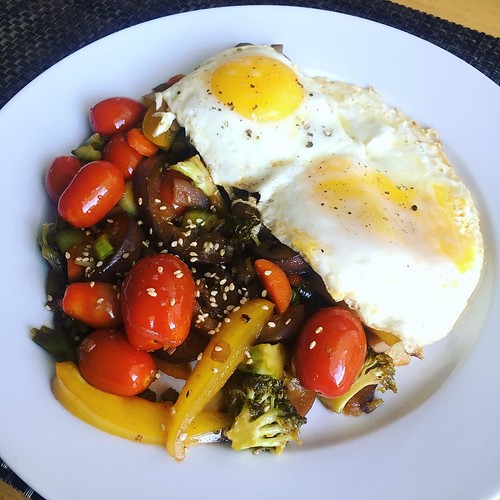Early gastric cancer (EGC) (n = 22), to advanced gastric cancer (AGC) (n = 30). Data are given as means 6 SD of transcript levels normalized to GAPDH. (B) Corresponding TGF-b2 mRNA levels in the same sequence. (C) and (D) TGF-b1 levels were upregulated and TGF-b2 levels were downregulated in tumor tissues, compared to peritumoral tissues from the same patients. Levels were normalized to GAPDH. Data from qRT-PCR in 20 paired cases are shown. (E) and (F) Significant positive correlations between TGF-b1 and Smad2/Smad7, using a bivariate correlation model. Data represent the transcript levels in 36 cases of GC after normalization to GAPDH. (G)Serum concentrations of TGF-b1 and TGFb2 measured by ELISA were significantly higher in early and advanced GC compared to controls (F = 4.745 and P = 0.018; F = 4.939 and P = 0.015, respectively). There was no significant difference between early and advanced GC. Ctrl: controls volunteers; EGC: early gastric cancer; AGC: advanced gastric cancer. doi:10.1371/journal.pone.0054249.gthere were no significant difference in the results of TGF-b1 and TGF-b2 mRNA levels in GC cells in 3687-18-1 direct coculture model using PBMCs isolated from GC patients or controls (Figure 3A), and these data were therefore pooled for analysis. Furthermore, concentrations of TGF-b1 in the cell supernatant of cocultures were significantly increased compared to those in PBMCs or GCs cultured alone in a FBS-free environment (P,0.05) and its levels in the direct coculture group were significantly higher than those in the indirect group (P = 0.029); however, (-)-Calyculin A although TGF-b2 levels were also increased in direct cocultures, the differences after cocultures were not significant (Figure 3B). We subsequently investigated the 15481974 effect of serum on the interaction between tumor cells and PBMCs. Surprisingly, TGFb1 and TGF-b2 concentrations in the indirect group, compared to that in the FBS-free condition, were inversely higher than those in the direct group after the addition of FBS. Moreover, the concentrations of TGF-b1 and TGF-b2 in the cell supernatant were significantly increased in indirect groups (P,0.05), but they were only slightly increased in direct groups (P.0.05), by the addition of FBS (Figure 3C). This suggests that an enriched environment may facilitate cytokine production in indirect not in direct communication. Further, to determine the origins of the cytokines, TGF-b1 and TGF-b2 mRNA levels were measured in GC cells and PBMCs respectively. Compared to monoculture, TGF-b1 mRNA levels were increased approximately 3-fold in the direct group and 2-fold in the indirect group in GC cells after coculture with PBMCs; TGF-b2 mRNA levels were significantly increased in GC cells after direct coculture but not statistically changed after indirect coculture. Meanwhile, TGF-b1 mRNA levels were decreased significantly and TGF-b2 mRNA levels were increased more than 5-fold in PBMCs after cocultures (P,0.05) (Figure 3D). These results indicate that the elevated TGF-b1 levels in the cell supernatant might originate from GC cells, while TGF-b2 might originate from PBMCs. In addition, we found that the mRNA levels of Smad2 and Smad3 in GC cells were also increased significantly after cocultures, which were higher in the direct coculture than those in the indirect one, but there was no statistic difference in the  levels of Smad4 (Figure 3E). Overall, these results suggest that cytokines production principally depends on the direct interaction between.Early gastric cancer (EGC) (n = 22), to advanced gastric cancer (AGC) (n = 30). Data are given as
levels of Smad4 (Figure 3E). Overall, these results suggest that cytokines production principally depends on the direct interaction between.Early gastric cancer (EGC) (n = 22), to advanced gastric cancer (AGC) (n = 30). Data are given as  means 6 SD of transcript levels normalized to GAPDH. (B) Corresponding TGF-b2 mRNA levels in the same sequence. (C) and (D) TGF-b1 levels were upregulated and TGF-b2 levels were downregulated in tumor tissues, compared to peritumoral tissues from the same patients. Levels were normalized to GAPDH. Data from qRT-PCR in 20 paired cases are shown. (E) and (F) Significant positive correlations between TGF-b1 and Smad2/Smad7, using a bivariate correlation model. Data represent the transcript levels in 36 cases of GC after normalization to GAPDH. (G)Serum concentrations of TGF-b1 and TGFb2 measured by ELISA were significantly higher in early and advanced GC compared to controls (F = 4.745 and P = 0.018; F = 4.939 and P = 0.015, respectively). There was no significant difference between early and advanced GC. Ctrl: controls volunteers; EGC: early gastric cancer; AGC: advanced gastric cancer. doi:10.1371/journal.pone.0054249.gthere were no significant difference in the results of TGF-b1 and TGF-b2 mRNA levels in GC cells in direct coculture model using PBMCs isolated from GC patients or controls (Figure 3A), and these data were therefore pooled for analysis. Furthermore, concentrations of TGF-b1 in the cell supernatant of cocultures were significantly increased compared to those in PBMCs or GCs cultured alone in a FBS-free environment (P,0.05) and its levels in the direct coculture group were significantly higher than those in the indirect group (P = 0.029); however, although TGF-b2 levels were also increased in direct cocultures, the differences after cocultures were not significant (Figure 3B). We subsequently investigated the 15481974 effect of serum on the interaction between tumor cells and PBMCs. Surprisingly, TGFb1 and TGF-b2 concentrations in the indirect group, compared to that in the FBS-free condition, were inversely higher than those in the direct group after the addition of FBS. Moreover, the concentrations of TGF-b1 and TGF-b2 in the cell supernatant were significantly increased in indirect groups (P,0.05), but they were only slightly increased in direct groups (P.0.05), by the addition of FBS (Figure 3C). This suggests that an enriched environment may facilitate cytokine production in indirect not in direct communication. Further, to determine the origins of the cytokines, TGF-b1 and TGF-b2 mRNA levels were measured in GC cells and PBMCs respectively. Compared to monoculture, TGF-b1 mRNA levels were increased approximately 3-fold in the direct group and 2-fold in the indirect group in GC cells after coculture with PBMCs; TGF-b2 mRNA levels were significantly increased in GC cells after direct coculture but not statistically changed after indirect coculture. Meanwhile, TGF-b1 mRNA levels were decreased significantly and TGF-b2 mRNA levels were increased more than 5-fold in PBMCs after cocultures (P,0.05) (Figure 3D). These results indicate that the elevated TGF-b1 levels in the cell supernatant might originate from GC cells, while TGF-b2 might originate from PBMCs. In addition, we found that the mRNA levels of Smad2 and Smad3 in GC cells were also increased significantly after cocultures, which were higher in the direct coculture than those in the indirect one, but there was no statistic difference in the levels of Smad4 (Figure 3E). Overall, these results suggest that cytokines production principally depends on the direct interaction between.
means 6 SD of transcript levels normalized to GAPDH. (B) Corresponding TGF-b2 mRNA levels in the same sequence. (C) and (D) TGF-b1 levels were upregulated and TGF-b2 levels were downregulated in tumor tissues, compared to peritumoral tissues from the same patients. Levels were normalized to GAPDH. Data from qRT-PCR in 20 paired cases are shown. (E) and (F) Significant positive correlations between TGF-b1 and Smad2/Smad7, using a bivariate correlation model. Data represent the transcript levels in 36 cases of GC after normalization to GAPDH. (G)Serum concentrations of TGF-b1 and TGFb2 measured by ELISA were significantly higher in early and advanced GC compared to controls (F = 4.745 and P = 0.018; F = 4.939 and P = 0.015, respectively). There was no significant difference between early and advanced GC. Ctrl: controls volunteers; EGC: early gastric cancer; AGC: advanced gastric cancer. doi:10.1371/journal.pone.0054249.gthere were no significant difference in the results of TGF-b1 and TGF-b2 mRNA levels in GC cells in direct coculture model using PBMCs isolated from GC patients or controls (Figure 3A), and these data were therefore pooled for analysis. Furthermore, concentrations of TGF-b1 in the cell supernatant of cocultures were significantly increased compared to those in PBMCs or GCs cultured alone in a FBS-free environment (P,0.05) and its levels in the direct coculture group were significantly higher than those in the indirect group (P = 0.029); however, although TGF-b2 levels were also increased in direct cocultures, the differences after cocultures were not significant (Figure 3B). We subsequently investigated the 15481974 effect of serum on the interaction between tumor cells and PBMCs. Surprisingly, TGFb1 and TGF-b2 concentrations in the indirect group, compared to that in the FBS-free condition, were inversely higher than those in the direct group after the addition of FBS. Moreover, the concentrations of TGF-b1 and TGF-b2 in the cell supernatant were significantly increased in indirect groups (P,0.05), but they were only slightly increased in direct groups (P.0.05), by the addition of FBS (Figure 3C). This suggests that an enriched environment may facilitate cytokine production in indirect not in direct communication. Further, to determine the origins of the cytokines, TGF-b1 and TGF-b2 mRNA levels were measured in GC cells and PBMCs respectively. Compared to monoculture, TGF-b1 mRNA levels were increased approximately 3-fold in the direct group and 2-fold in the indirect group in GC cells after coculture with PBMCs; TGF-b2 mRNA levels were significantly increased in GC cells after direct coculture but not statistically changed after indirect coculture. Meanwhile, TGF-b1 mRNA levels were decreased significantly and TGF-b2 mRNA levels were increased more than 5-fold in PBMCs after cocultures (P,0.05) (Figure 3D). These results indicate that the elevated TGF-b1 levels in the cell supernatant might originate from GC cells, while TGF-b2 might originate from PBMCs. In addition, we found that the mRNA levels of Smad2 and Smad3 in GC cells were also increased significantly after cocultures, which were higher in the direct coculture than those in the indirect one, but there was no statistic difference in the levels of Smad4 (Figure 3E). Overall, these results suggest that cytokines production principally depends on the direct interaction between.
